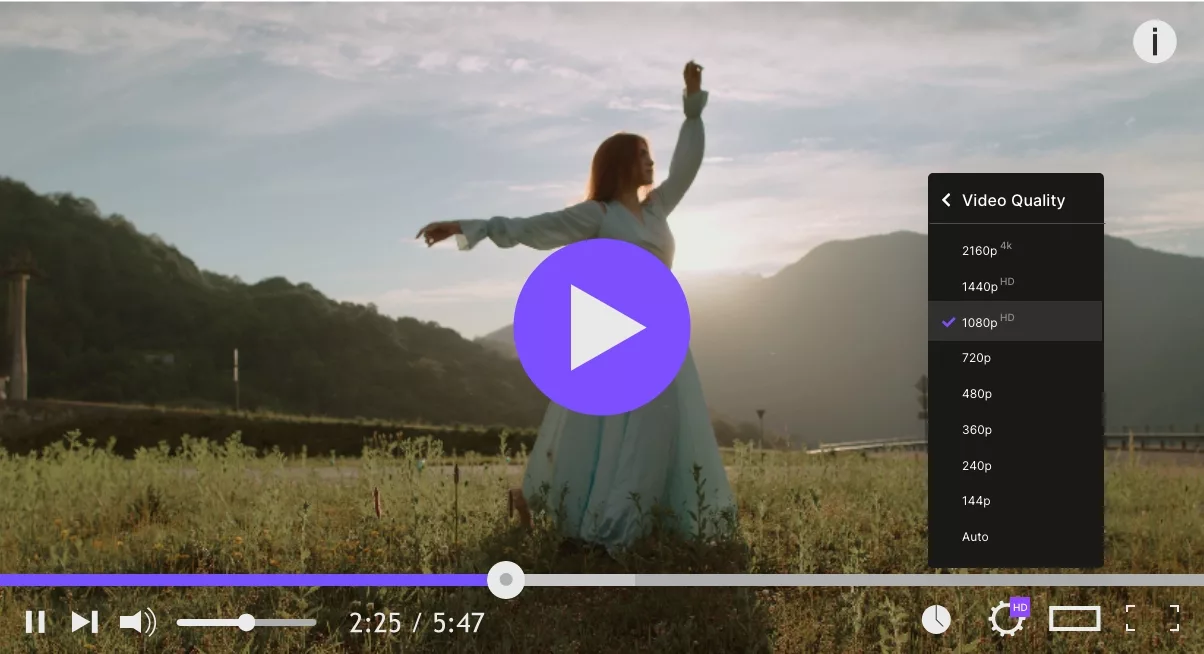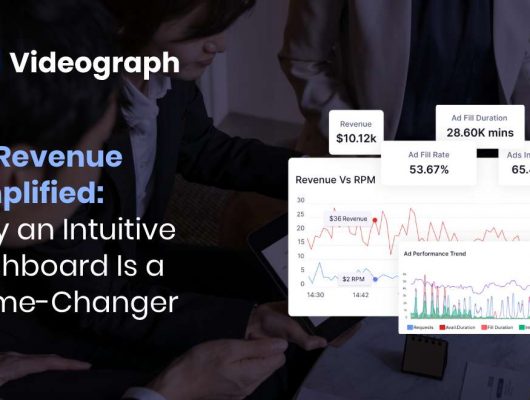While streaming your favorite content, you might have experienced hazy, unclear videos. You might have also tried to enhance the video quality by changing the internet connections. Video quality is a significant factor to consider while streaming online as it can greatly impact a viewer’s experience.
There are different aspects of video quality to consider. They are resolution, frame rate, and bitrate.
Resolution refers to the number of pixels in a video, and the higher the resolution, the sharper and clearer the video will be. The most common resolution for streaming video is 1080p, which is 1920×1080 pixels.
Frame rate refers to the number of frames displayed per second, and the higher the frame rate, the smoother the video will be. The standard frame rate for video streaming is 25 and 30 frames per second (fps).
Now let us understand what bitrate represents. The amount of video data transferred per second is known as bitrate. The higher the bitrate, the better the video quality will be. Bitrate plays a significant role in determining quality. This means, larger the bitrate, larger will be the video size.
In this blog, we will be explaining the ideal bitrate vs resolution to select for optimal video quality at less bitrate and hence smaller file size.
How will you tackle this? By choosing the right bitrate. Let us break it down for you.
What exactly is a bitrate?
As mentioned above, bitrate is a term used to describe the amount of data that is used to represent a certain amount of audio or video information. Bitrate is measured in bits per second or bps.
In the world of video, the standard bitrate for high-quality video is 2500 to 4000 kbps, and a lower quality file may have a bitrate of 350 to 800 kbps. This difference can be evidently seen in the quality of the video. Video bitrates are usually measured in megabits per second, considering their large sizes and audio files in kilobits per second. The conversion is pretty simple- 1000kbps is equal to 1Mbps.
The number of bits is the very famous 1s and 0s in the binary language. During a playback, a certain amount of 1s and 0s are processed, and this is the bit rate. So, the larger the bitrate, higher is the amount of video data pushed each second. This means, higher resolution, higher frame rate, and thus higher quality.
Does this mean that choosing higher bitrate is the ultimate solution to better video quality? Actually, no. Higher bitrate improves the quality but also increases the file size. It can be taxing for a system or an encoder to download or upload larger file sizes, and it might take more time.
Bitrate, measured in bps usually represent the speed at which a video can be uploaded or downloaded. In case you check your internet bandwidth, you can understand how many bits are transferred each second. Hence, higher the connection speed, more bitrates are processed and you can download in high speed.
But bitrate is not just speed. When a video file is created and sent to an encoder, the file has a preset bitrate. This rate states the amount of data that should be transferred in each second, for the video to stream without a buffer. The bitrate demand of the file should not exceed the internet speed. As this will lead to stream failures.
All of this makes it difficult or complex to stream video with larger file sizes.
How to choose video bitrate?
While choosing the right bitrate, you cannot just aim for a higher bitrate. There are different factors that influence finding the right bitrate and producing a high-quality video stream.
1. Video resolution
The number of pixels per frame defines the video resolution. If the pixels are higher, the image will be clearer and more detailed. The resolution also constitutes data and impacts the bitrate need of a video. Higher resolution will demand higher bitrate. The two most common resolutions for streaming are 720p and 1080p.
2. Frame rate
A video is made from static images and these are called frames. Frame rate of a video is measured in frames per second (fps) and the higher the frame rate, seamless the video. Use 30fps for standard HD resolution and 60fps for full HD streaming. The frame rate decides how smooth the video plays.
3. Encoder
A video encoder compresses the video into a digital format. You can select the desired resolution, frame rate, and bitrate, at which the encoder will process the video. It is important to choose an encoder that can meet your demands and can enable your computer to smoothly process the video.
4. Bandwidth of the viewer
While selecting a video bitrate, you should keep in mind the audience you want to reach and their bandwidth limits. Everybody out there won’t be able to stream the video in the highest resolution possible. Bigger bitrates can disrupt the playback at the viewer’s end. If your viewer’s internet bandwidth is lesser than your video bitrate it will cause the video to buffer or end. Use adaptive bitrate streaming (ABR) to suit the playback to your audience’s devices.
Popular streaming platforms have different bitrate recommendations according to the desired video resolutions.
We have put together the bitrate recommendations given to the users by Youtube.
| Resolution (pixels) | Frame rate (frames per second) | Recommended Video Bitrate (kilobytes per second) |
| 360p | 30fps | 1000kbps |
| 360p | 60fps | 1500kbps |
| 480p | 30fps | 2500kbps |
| 480p | 60fps | 4000kbps |
| 720p | 30fps | 1,500-4,000 kbps |
| 720p | 60fps | 7500 kbps |
| 1080p | 30fps | 3,000-6,000 kbps |
| 1080p | 60fps | 4,500-9,000 kbps |
| 1440p | 30fps | 6,000-13,000 kbps |
| 1440p | 60fps | 9,000-18,000 kbps |
| 4K | 30fps | 13,000-34,000 kbps |
| 4K | 60fps | 20,000-51,000 kbps |
Broadcasters can choose their choice of encoder settings and use different video bitrate strategies according to the streaming protocols in use. For example, the popular WebRTC protocol does not support adaptive bitrate streaming (ABR). Let’s see what are the common video bitrate strategies.
Constant bitrate
Constant bitrate (CBR) transmits data at a constant rate. CBR is the most basic way of encoding videos. In CBR, you choose a single bitrate for the whole stream and it does not change even during any fluctuations at the user end.
CBR is the most used method in live streaming as it is very compatible with devices and the encoding happens real-time. While using CBR, it is recommended to use relatively higher bitrate possible so that the complex parts are processed easily and it can be played without much disruptions.
Variable bitrate
Unlike CBR, variable bitrate (VBR) encodes and transmits video in variable bitrates. With a variable bitrate system, the encoder encodes different portions of videos at different bitrates according to the complexity of the data. This ensures that there is lesser bandwidth demand while maintaining the stream quality. VBR is best suited for on-demand videos.
Adaptive bitrate
Adaptive bitrate (ABR) optimizes the video quality by determining different bitrates according to the user’s resources. It adapts instantly according to the bandwidth of each user and upgrades the bitrate or serves those with poor network conditions. Adaptive bitrate algorithm creates multiple streams at different bitrates to accommodate all kinds of users and devices. There is a range of bitrates the encoder sticks to this, which is called an adaptive bitrate ladder.
Concluding…
Did we answer all your questions? Are you still confused?
Let us wrap it up. As a video broadcaster, one should be aware about different bitrates and how these can optimize your streaming. The bitrate you choose will determine the stream quality. The more data you send for transmission per second, the smoother your stream becomes.
At Videograph, you don’t have to worry about video quality or bitrates. Once you ingest the video, Videograph processes it seamlessly. All content is converted into adaptive bitrate streams with the smart algorithm. Videograph ensures optimal streaming experience to all your audience at the highest quality possible.
What are you waiting for? Experience this unique solution by visiting https://www.videograph.ai/








1 Comment
Comments are closed.